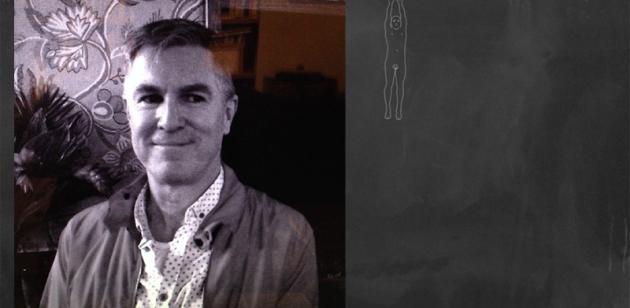Canadian artist Wrik Mead who is currently exhibiting at the PayneShurvell gallery in London (until 26th October) talks to Artlyst’s editor Paul Carter Robinson about Art, Life and how this Goldsmith’s MA graduate uses animation to create a personal form of installation art.
AL: Who Are You?
WM: I’m Wrik Mead, an artist from Toronto. Do you want a little bio?, OK, I did undergraduate studies at OCA (now OCAD University) in Toronto and then moved to London to do an MA at Goldsmiths in 2005. I am now chair of Media and Installation Art at OCAD, one of Canada’s leading art colleges.
AL: How would you describe your work and where it fits into art today?
WM: I have pushed my practice over the years to a more personal approach rather than what’s trendy or in vogue. Having said that, animation is a very hot topic now. It has been something that has been a part of my work for a number of years. I’ve made over 50 films that contain one form of animation or another.
AL: Where can we see some of your films?
WM: you can go to www.wrikmead.com and I have a number of my films that you are able to view. Of course there is also the exhibition at PayneShurvell which runs through Frieze week until 26 October.
AL: Where do you fit in the big scheme of things in the art-world?
WM: I have shifted quite a bit over the last years. I’ve had a huge amount of success with my films, most were of an experimental genre and many people connected to them, but I found that they were just a little too strange for the general public. My current work, and it wasn’t intentional, seems to connect to a lot of people. It could be the use of a more traditional animation rather than pixilation that manipulates human figures. Because the new work is hand drawn people are quite fascinated, even though the content is quite unsettling. The animated drawings offer some distance and allow people to enter the work without feeling disturbed.
AL: Tell us a little about how you have evolved your drawing skills into animation as a medium.
WM: I have always had elements of animation in my films but I never thought of evolving my drawings into animation. I did however create involved storyboards for all my previous films and this is what has evolved into my current films like 1975. My partner encouraged me to see that my drawings weren’t as pedestrian as I thought and that they had a degree of skill set, which could be developed into this medium.
AL: So What is 1975 about?
WM: It is a reflective film about 1975. I was 13. It was the year that I got into art. I made my first animated film in that year. All of my films previous to 1975 were portraits of other people and this is more about me personally. I wanted to depict that year warts and all and see what I could come up with. Initially there were just a few key things that I thought were worth reflecting on, but as the project progressed I found it striking how many key events happened to me in that year. There are many characters in 1975 that have significance to me but I tried to keep the meaning open. The viewer can walk in and take what they want from the quasi-narrative, to escape into my little world and get lost for an hour. There is no beginning middle or end so you can enter the work at any point.
AL: How important is the queer element in your work?
I touch on queer identity in most of my films, but I try not to shove politics down peoples throats. A lot of my politics are quite personal, even when I’m talking about other people. I hope that out of an open narrative that touches on queer identity, everyone can get something out of it. This is how I approach gay politics. It’s not always overt but I’m proud of the message, although I don’t want to pigeonhole it and estrange myself from a wider audience.
AL: What has been the public reaction to your current exhibition at PayneShurvell?
WM: When I created an hour long animation ,I expected people to come into the room and watch 5 – 10 minutes of the film but people have been coming in watching the full hour and staying to see it again. It all takes place in a dark room, but as your eyes adjust you can see the chalk drawing on the wall. I have redrawn my studio in Toronto where I animated the film. It is an immersive environment. You can get lost and escape.
Interview and Photo © P C Robinson Artlyst 2013
Wrik Mead: Draw the Line – PayneShurvell
13 Sep 2013 End 26 Oct 2013
During Frieze week, PayneShurvell will be hosting a party from 7-10pm on Friday 18 October. The art-house producer Quitters has composed a new soundtrack to Wrik Mead’s film 1975 which will be played live at 8pm as the film is projected.

